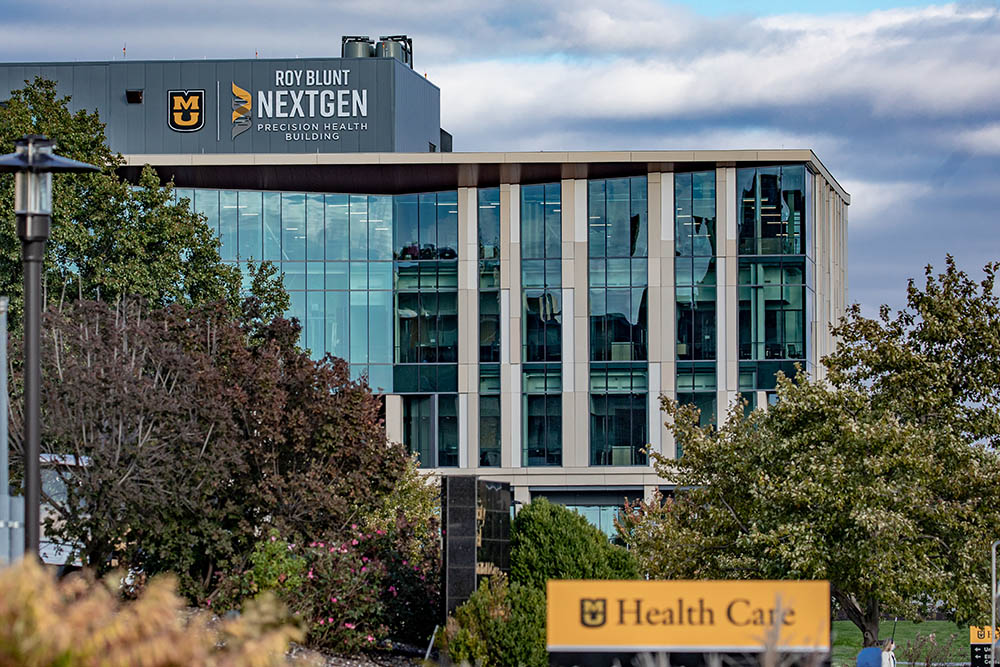January 02, 2022

Artificial intelligence (AI) has the capability to quickly identify abnormalities in medical images and flag health issues. Before it can fully be trusted, though, researchers need to process, label and analyze large volumes of data to train a neural network on what to look for.
At the Roy Blunt NextGen Precision Health building on the MU campus, that’s where a team of Mizzou Engineers will come in. The interdepartmental group will help clinicians and medical professionals there better analyze the large volumes of information (on the order of several terabytes) coming from sophisticated MRI and other imaging equipment, as well as determining how best to store that information securely.
The team brings together expertise from a number of specialty fields. Professor Kannappan Palaniappan and Assistant Research Professor Filiz Bunyak — both from electrical engineering and computer science (EECS) — have spent years developing methods to train AI to analyze images. EECS Associate Professor Prasad Calyam is an expert in cyber security and cloud computing who has previously developed remote instrumentation technologies and collaboration environments for different kinds of scientific instruments. And Associate Professor Matt Maschmann in mechanical and aerospace engineering specializes in AI-driven manufacturing of nanomaterials and material characterization.
“We have a lot of experience in intelligent image analytics in our college where we can help,” said Calyam, who is also Greg L. Gilliom Professor of Cyber Security. “We all bring different skills to the table for these image analytics projects that require significant computation resources and expert collaborations to speed up discovery and create necessary innovations.”
The team has several preliminary tasks.
First, researchers want to come up with the best way to collect the data generated from the imaging instruments at NextGen, including determining what types of data are going to be most useful. Given the large volumes of data and the high demand on the time available on the expensive instruments, efficient data collection will be essential.
Then, they must decide how best to manage that data, such as moving it to the cloud where complex algorithms can begin to automate analysis processes. They also need to determine the best way to protect that information from cyber threats. The group is working closely with the Division of IT as well as industry partners such as IBM and Amazon Web Services to determine best practices to use computational resources for image processing.
And they need to develop user-friendly applications that humans will be able to work with before AI can fully take over. Particularly, they are adopting the paradigm of science gateways with chatbot technologies that will allow users to have easy access to distributed computing resources to securely and rapidly handle the image analytics processes.
Maschmann is working with the team to collect electron microscope images of nano materials that can be used to train advanced machine learning algorithms that can classify the attributes of the material in the image while also predicting the mechanical properties of that material.
Finally, the group. Is creating frameworks to manage data collection and processing, Calyam said.
“How can we build this synergy between data collection and computation so they can guide one another?” he said. “The more we can do processing in real time, the better we can figure out what should be collected next or even what parameters to change in the next collection.”
The team is building on collaborations that are ongoing with experts in imaging and radiology including Professor Talissa Altes in the Department of Radiology, Professor Mahesh Thakkar in the Department of Neurology, Associate Professor Teresa Lever in the Department of Otolaryngology and Professor Michael Chapman, Chair of the Department of Biochemistry.
Through the UMKC and MU joint efforts on the NextGen Data Science and Analytics Innovation Center (dSAIC), the team will also work with Professor Russ Waitman on extending collaboration activities to other relevant NextGen stakeholders across the UM System. Waitman is associate dean for informatics and director of medical informatics for NextGen Precision Health.
Calyam is hopeful that the collaborations lead to further interdisciplinary projects for NextGen operations supported by federal agencies along with industry partners, as well as guides new research areas and provides training opportunities for students.